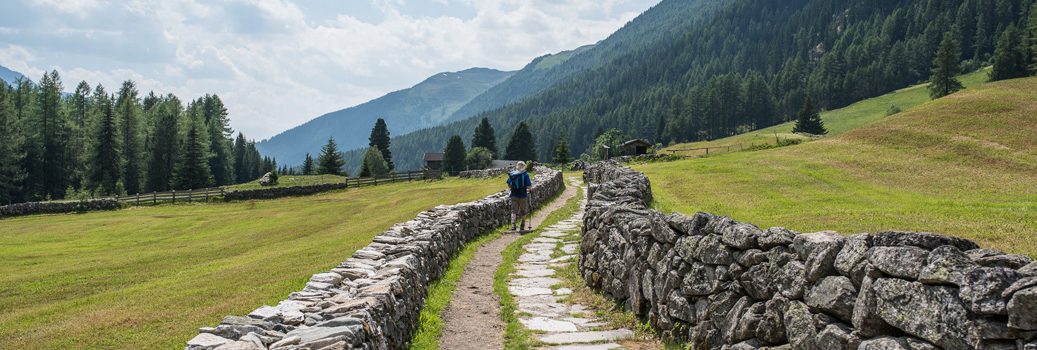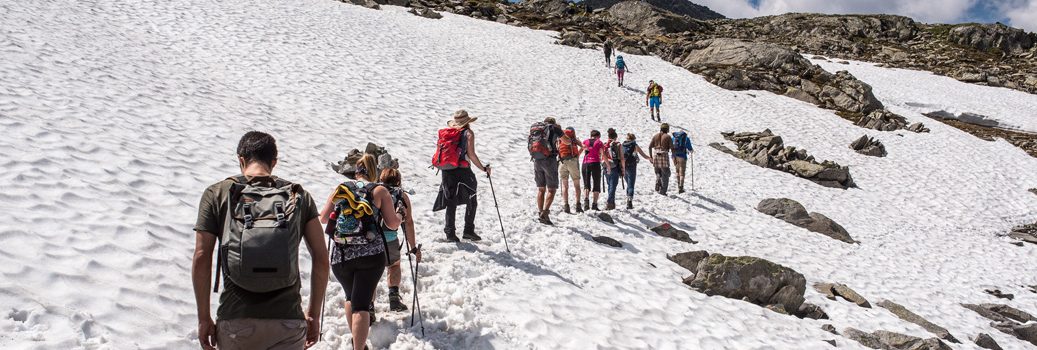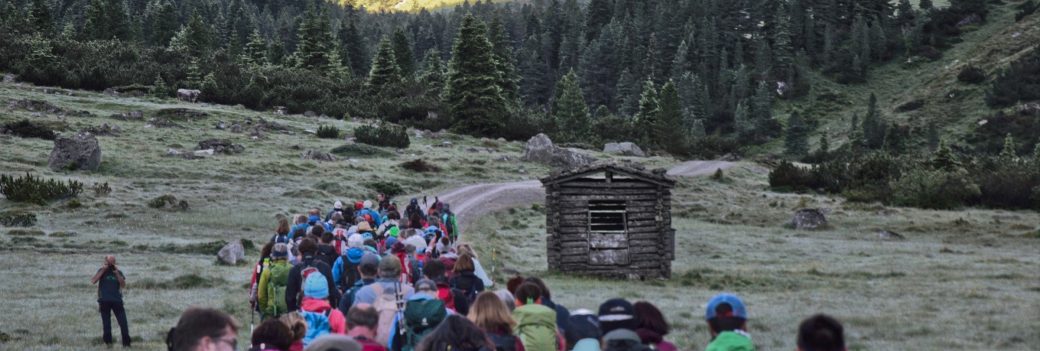The Bricha (meaning “escape” or “flight”) Movement 1944-1949 was the illegal underground organization that helped Jewish Holocaust survivors escape from post Second World War Europe to the region which is now known as Israel. I was born in Kibbutz Alonim in 1944, so actually I am a Palestinian, born before the State of Israel was established. Both my parents are from Poland, almost all the family died in the Shoa. In my Kibbutz no child had grandparents, so I was convinced that parents had no parents themselves. In September 1945 my father, Zvi Netzner (Melnitzer), was recruited by the Mossad Le’Aliya B to work as head of the Bricha in Poland. He served there until 1948 and returned to the shooting sounds of our Independence War.
An article by Miri Nehari
The activity of the Bricha was initiated by the survivors themselves. Later, emissaries from Israel came to join them and under their leadership, with the help of the British Army Jewish Brigade Soldiers and funded by the Joint Distribution Committee (JDC), the largest Jewish humanitarian organization in the world, the Bricha operation became an important chapter in the founding of the modern State of Israel. The Bricha Movement – the immigration by land and the Ha’apala Movement – the emigration by sea present together a story of courage and bravery and cunning and love for the Jewish people.
The Beginning
World War II ended on 8 May 1945. All around the world there was great joy, but for Jews there was no joy. They had only now realized the extent of their disaster, the loss, the devastation, the loneliness. They had no family to go back to, no home, no country, maybe no friends and family. Many survivors believed that they were the last to survive, and that the Jewish people were no more. Out of the ashes a phoenix rose, got up and started walking to its ancient homeland. The beginning was led by veterans of the pioneering prewar Zionist youth movements – partisans, and ghetto fighters, and they set the way. Where? – to Eretz Israel. How? – together, supporting each other. Hence the name Bricha.
The journey and the decision to live
The journey of Holocaust survivors on the Bricha routes was made in more than one sphere. Before embarking on this long journey, the survivors had to make a choice to live. In the psychological sphere it was a journey of self-rehabilitation, of coping with despair, bereavement and loss. It was a choice to embark on the unknown, knowing that nobody wanted them. They were illegals, who had to travel illegally, cross borders illegally, and fight to enter their country illegally, as the borders of Eretz Israel were closed to them.
The journey in the geographic sphere was on the paths of Europe’s routes. The survivors walked in snow, rain or storms. They rode in trains that barely worked, they were transported in lorries covered as if they were cargo.
The journey in the family sphere would be the finding of a mate and starting a new family, having children even though they did not yet know how they could provide for the family or where they would live. They made a journey to embrace hope to continue life, to love.
In the social sphere there was a journey to rebuild a community, to restore the Jewish culture and this started it in the DP camps. A dramatic chapter of the Bricha people was gathering children from the forests, from hiding holes and monasteries, where they were kept alive during the war. The Bricha established homes and schools for these orphans and transported them on the routes from Europe illegally to Israel to heal.
From an existential state of helplessness and a struggle just for physical survival, this journey has provided a sense of power. Power to fight for a purpose, a meaning for life, power to build and to create.
From an existential state of helplessness and a struggle just for physical survival, this journey has provided a sense of power.
The Bricha Movement becomes an Organization
Emissaries from Israel came to work together with survivors and activists who were given command of the Bricha. The Bricha became an organization suited for such a huge undertaking. There was a chief commander who coordinated the activities in the various European countries. They arranged the transport, the illegal crossing of borders, the false papers laboratories, shelters, schools for the children, bringing those who wanted to the Mediterranean shores, where the illegal ships were waiting.
Austria was one of the main transit countries for the Bricha, and from 1945 to 1948, nearly 280,000 Jewish survivors passed through Austria and Germany from the Soviet Union, Poland, Romania, Hungary and Czechoslovakia, on their way to refugee camps from where they hoped to enter Italy and France.
The map clearly shows that the border between Austria and Italy south of Salzburg was under the control of the US, British and French military. The Bricha Movement had to move survivors not only through borders between countries, but also through borders between Allied army control areas. The British, of course, did everything they could to stop the survivors and send them back. They closed all the crossing roads from Austria to Italy in their territories. Therefore, the crossing points for the refugees were transferred to Saalfelden and Lagernwald.
There were no mountains high enough or rivers deep enough to stop them on their journey to Eretz Israel. The Alps Crossing was one of the hardest parts of the way, not least because it included trails through snowy passages in the Alps. Italy allowed Jews to be smuggled across the border from Austria and permitted them to stay until they boarded the illegal ships. The survivors were often given moral and practical help by the Italian people. Assistance at the Alps crossing included things such as providing information about the movements of the British Army or sometimes hiding the refugees from English Police.
Any Jewish refugee who traveled the routes of Europe was perceived by the British as a potentially illegal immigrant to Israel and therefore must be fought against and prevented from reaching the shores of the Mediterranean. The Brenner Pass, the main Bricha road between Austria and Italy was closed by the British for Jewish immigrants when they realized that this was an important passage for Bricha-lead survivors. It was then necessary to find another way from Austria to Italy.
Disguised as friends going on day trips, Abba Geffen, the Salzburg Bricha commander, Marko Feingold and friends set out to look for creative ways to smuggle refugees on to Italy. At the foot of the Alps near Krimml, they found an Alpine passage that was once, in the 16th century, a path for cattle thieves to secretly transport cattle from one country to the other. On this Alpine Pass at night, in the snow, the survivors walked towards the Promised Land. If caught by the British soldiers, they would be returned to the camp in Austria. But they would not give up and repeatedly set off on the difficult path until they made it to Italy. Resourcefulness, creativity, cunning, determination, helping each other and despair were their weapons. The assessment is that about 50,000 survivors crossed the borders from Austria to Italy. Most of them immigrated to Israel.
Finally they were home.
Home
In Italy the survivors waited in Bricha camps for their turn to get on a ship and sail to Israel. They knew that the journey would be long, they knew the British Army frigates would probably stop them at sea. They knew they would be taken to prisoner camps again, on the island of Cyprus, behind barbed wire again. And still they went. They knew that when they would finally make it to Israel, they would have to fight for their old-new country. Young men were recruited to the army a week after arrival to Israel, and went to war for a country before having seen it. About half of the fighting force of the new Israeli Army were Holocaust survivors. They were also part of the force creating and building the new State.
Finally, they were home.
Information on the author: Miri Nehari is a clinical-educational-health psychologist and the head of the Bricha Association.








